Travel Clothes for Women Over 60: What to Pack
Packing for a trip can be exciting, especially when aiming for a stylish yet comfortable wardrobe. For women over 60, achieving this balance matters. Selecting appropriate travel clothes can enhance ...

By Modern60
Last Updated on,
May 16th, 2025
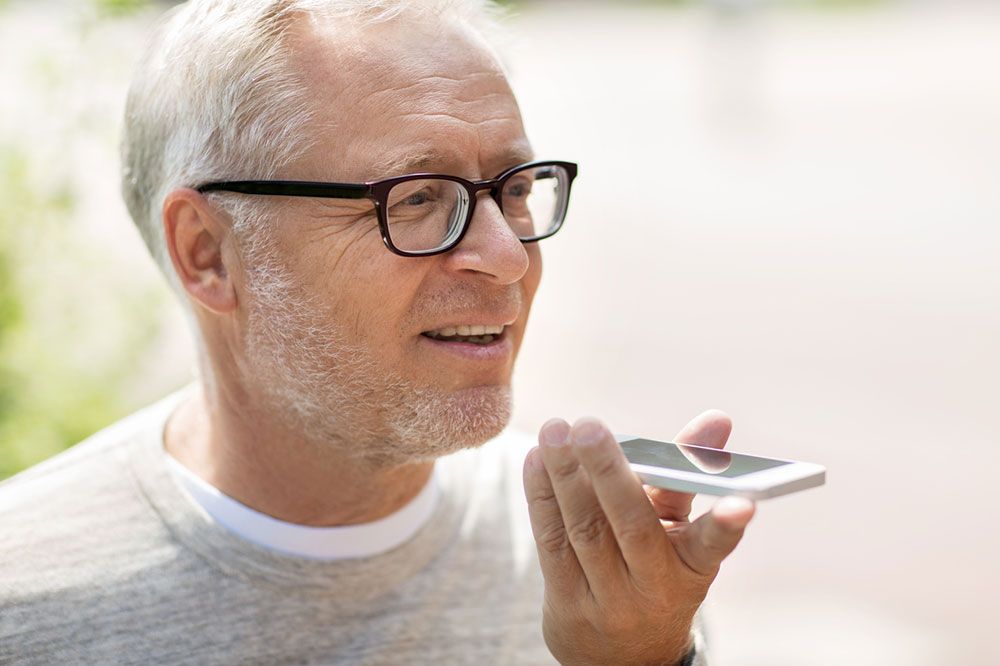
Assistive devices such as grab bars, stairlifts and walkers are designed to streamline caregiving and make the home safe for seniors. These innovations help seniors perform daily tasks with ease, thus saving time and effort. Some of these tools and accessories are designed to aid those with mobility issues, while the rest provide added comfort during daily routines. So here is a rundown of the best assistive devices that simplify senior living.
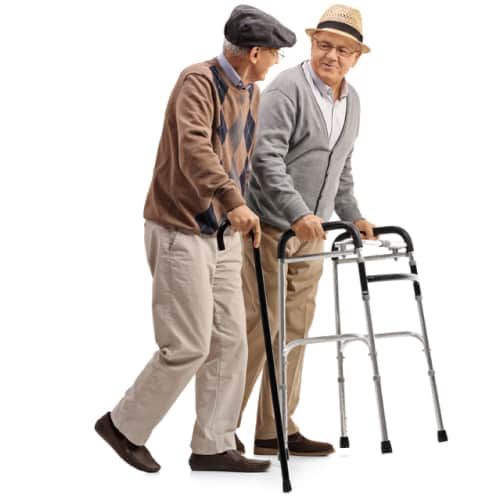
Mobility is one of the more concerning issues with advancing age. But more so with a chronic joint problem or after a major surgery. It’s important to understand that using a walking assist does not mean you have a physical disability. Even if you can move around the house without any assistance, it is advisable to consider walkers and canes as additional support for proper gait and improved stability. Canes come in a variety of builds and sizes, ranging from simple walking sticks with a rubber grip to more complex quad pod designs with four support legs and ergonomic grips.
Walkers are a slightly more advanced version of the cane with multiple structure elements that make it sturdier and safer. It’s smart to rely on mobility devices to prevent permanent leg or bone damage while recovering from recent leg or knee surgery. It’s always better to use a walker as these devices have multiple support legs designed to distribute the total weight. Premium walker designs even feature two front wheels to make it easier to slide and navigate without much resistance. You can shop for walking canes and walkers online or buy one from hospitals and outpatient care centers providing physical therapy.
These are high-quality and functional assistive devices designed as an alternative to traditional walking canes and walkers for seniors. The ingenious design of these assistive devices eliminates the need for relying on a single stick to maintain balance. Healthcare professionals who recommend physical rehabilitation after major surgery or diagnosis of chronic diseases that affect mobility suggest using ACTIVATOR® poles to their patients. With their advanced design, these walking sticks can support a maximum body mass of 250 lbs.
Also, the ergonomic design of the grips prevents any wrist pain or injury while using the sticks. Instead of a sharp pointed tip, these poles come with a bell-shaped design upgrade to support more equitable mass distribution. In addition, the poles are equipped with antivibration features that minimize the stress on important joints. Another amazing design upgrade of ACTIVATOR® poles is the 2-section collapsible poles. This makes it easy to fold and unfold the poles, making the product travel-friendly. You can simply pack them away for use at any other location. You can purchase a set of activator poles for just $120 on the official brand website.
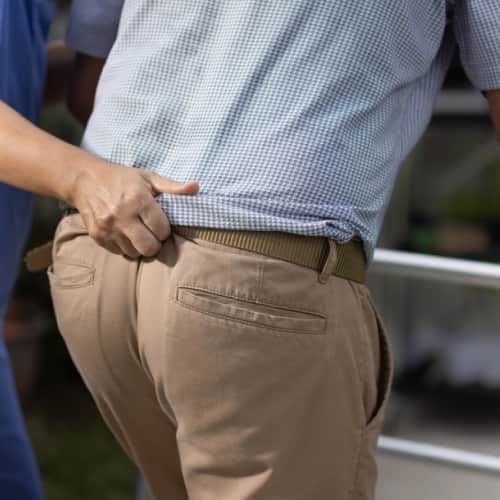
Some underlying health complications can affect your posture and cause chronic problems with gait. You might have to use specific assistive devices to prevent such symptoms from worsening. For example, conditions like arthritis that are progressive in nature cause bone and joint deterioration making it difficult to stand straight for extended periods. This is where a standing frame can help retain proper posture and relieve any discomfort caused due to poor balance. Seniors can also consider using gait belts after a certain age to improve movement and stability. Gait belts are recommended for routine use during the recovery period after a major surgical procedure that involves the spine or hips. These belts can also be used with other assistive devices like canes and walkers to improve balance and lower the risk of falls, especially when walking up and down a flight of stairs.
If you live in a duplex and have to use the stairs frequently, consider installing a stair lift. It is one of the best assistive devices for the elderly. Bone conditions like arthritis or osteoporosis can make climbing stairs painful and challenging, even if it’s just one level of elevation. This puts undue pressure on your joints and increases the risk of injury if you lose your balance. A stair lift is a slow but safe option that can be easily customized and installed on your existing staircase. The motorized chair is designed to move at a set speed in both directions. Premium stairlifts even come with custom options for speed control, angle of incline, and comfort settings for sitting. Senior citizens living in large homes should consider installing a stair lift for indoor stairs. Also, if the walking path up to the main entrance is steep, you can consider installing premium outdoor stair lifts that serve the same purpose and ensure efficiency in mobility.
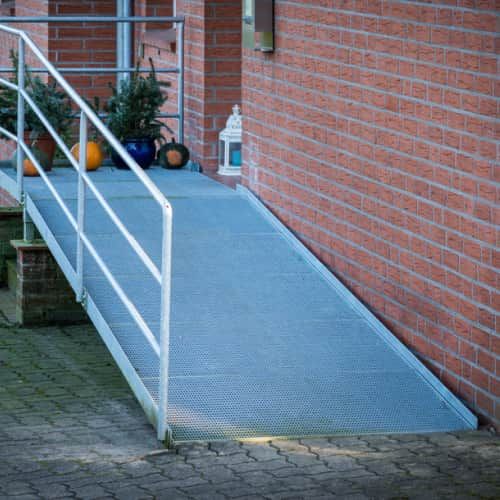
If you use a wheelchair or a mobility scooter to get around the house, an outdoor entry ramp is a good option, specifically for the front or back door. They make entering the house easier. These ramps are versatile, and can also be used to simply walk on a lower stressful incline without putting pressure on the joints. Compared to straight stairs, ramps provide a more user-friendly access point. These ramps are designed for minimal assist movement and support other home modifications to improve mobility for seniors of all ages.
In fact, there are several sponsored programs by the federal government and non-profit organizations that install a fully functional entry ramp for free. You can check the website of Habitat for Humanity’s local chapter to understand if there are any projects being done in your neighborhood. Upon pre-qualification and approval, volunteers working with the organization will provide all the materials and install the ramp absolutely free of charge. Senior citizens who have served in the armed forces and are presently in need of financial assistance can check out resources available with VA’s Home Improvement and Structural Alterations benefit. Rebuilding Together Ramp Program and Operation Ramp It Up are other non-profit initiatives that can help fulfill this requirement.

Daily capsule caddy accessories help keep track of your ongoing prescriptions. But many healthcare brands have introduced feature-rich innovative devices like an automatic oral prescription dispenser that can be synced to your smartphone. This device sends reminders for taking a particular prescription and notifies individuals responsible for monitoring your daily routine if any dose is missed. Sometimes, you may forget to take your medication on time. In such situations, an automatic dispenser can be very helpful in reminding you of the prescription.
Accidental falls are also a major risk with advancing age, especially when you are living alone. This is where smart wearable mobile alert devices come in handy to notify your loved ones about a fall or accident that occurred when they were away. The simple bracelet or pendant device is connected to a wireless network. At the push of a button, family members and trusted friends receive an urgent action message that notifies them of your emergency situation. Premium devices are even calibrated to detect body movement and analyze gait to alert of imminent falls as well.
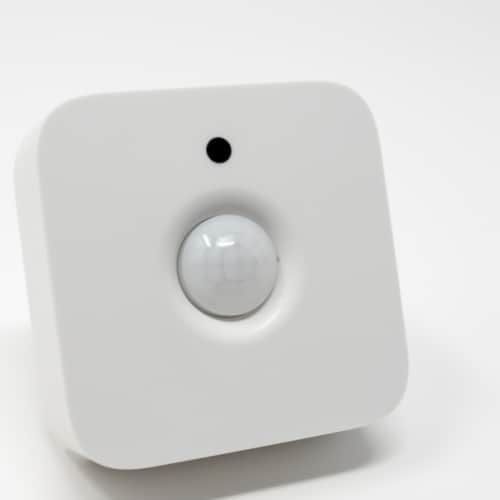
Poorly lit corridors or rooms increase the chances of a fall or an injury. You also don’t want to struggle with the light switch in the middle of the night, disrupting your sleep just to use the washroom. This is where motion sensor lights that snap on automatically to the preset settings can come in handy. These lights can be installed along the walking path leading to the washroom and in areas where navigation gets difficult in the dark. For example, under the staircase or even along the corridor in the hallway where light switches are placed at the farthest end. The motion sensors activate installed lights at the slightest movement and even switch off automatically once you’ve left the area. The sensors are synced to a limited range, so the lights don’t stay on every time someone steps close to the sensor array.
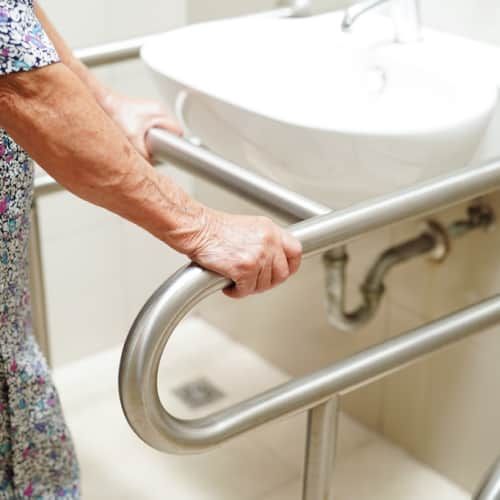
Moving around on your own after a certain age becomes difficult. To avoid putting pressure on the sensitive joints while sitting down or getting up, consider installing support rails for added stability. Bed rails are excellent assistive devices for the elderly that make it easy to get in and out of bed comfortably. The railing is easy to install and customize with straps and simple adjustable supports. Moreover, this type of assistive device instills a sense of confidence as you don’t have to rely on anybody for walking from the bed to the washroom. You can install additional handrails in the washroom to make sitting down and using the facilities less inconvenient. These rails weigh less than a few pounds but can support a full-grown adult.
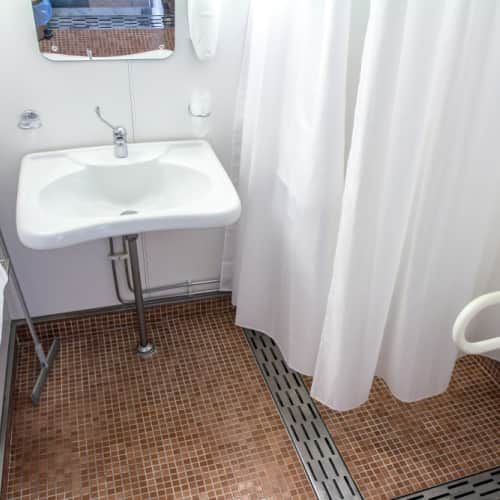
There are a number of modifications that can be done in the washroom to improve safety and complete daily tasks with minimal exertion. For starters, using a non-slip bath mat on the floor increases friction and prevents accidental slipping on a wet floor. This makes getting in and out of the shower or bathtub reasonably safe. Also, consider adding handrails near the restroom so you can easily sit and stand with additional support and not exert too much in the process. You can even raise the toilet seats to avoid squatting too much and hurting the knees. Grab bars should be additionally installed around the sink and communal areas going in and out of the washroom to make it safe for all seniors in the house. These assistive devices will be even more useful at night in addition to motion-detected light systems that illuminate the way to the washroom.
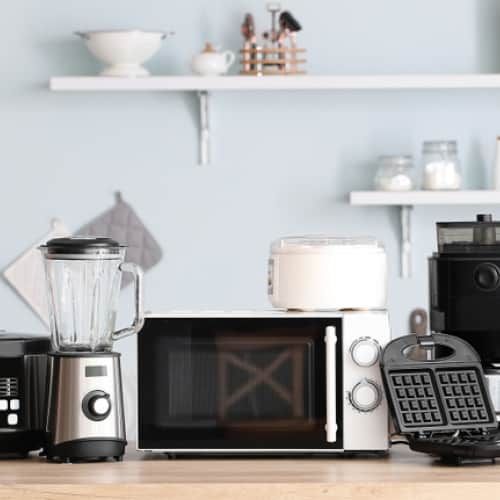
There are plenty of innovative modifications and adaptations you can make around the kitchen to improve safety and accessibility. For example, installing easily accessible pull-down cabinets can make it more convenient to reach and grab items for daily use. Lowering the height of these cabinets to make the spaces more accessible also lowers the risk of injuries in your attempt to grab something off the top shelves. You can also shop for innovative kitchen aids and accessories for handling utensils, chopping foods, etc.
For example, buy a universal grip turner to grip and turn small knobs on kitchen appliances like microwaves, dishwashers, and cooktop ovens without having to exert too much force. Also, using burner alerts for the stovetop or switching to induction cooktops can lower the risk of fire hazards. Shop for ergonomic utensils and cutlery designed for easy grip with anti-slip features. Use easy-to-operate multipurpose vegetable choppers, cutters, can/jar openers, and any other assistive device that reduces physical exertion while preparing a meal.
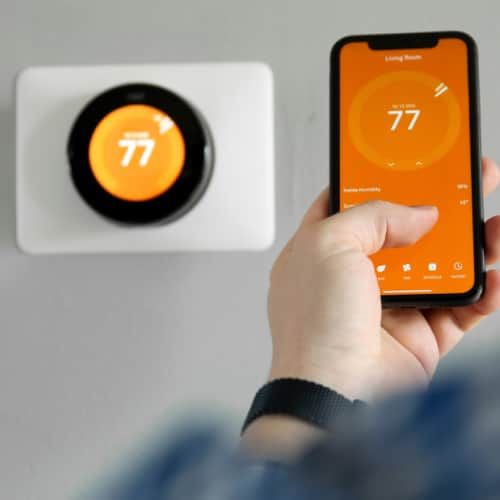
Getting up to adjust the room temperature can be quite a hassle, especially during the peak months of summer or winter when the weather can fluctuate frequently. It can be tiring to continuously walk from the thermostat in the hallway to your bedroom. This is where you can take advantage of smart thermostat assist devices for the elderly to control the temperature using a smartphone. Premium thermostats can also be controlled using active voice recognition commands. You can set just the right temperature and avoid a trip down the hall. These devices may sound fancy and expensive to install, but it’ll only cost you a couple of hundred dollars for the upgrade and save you a lot of time and effort once the system is functional.
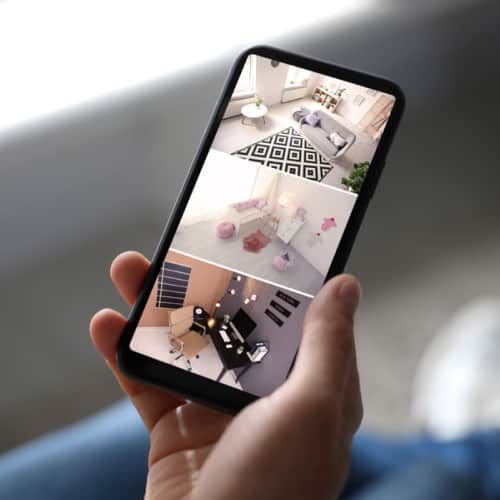
If you live by yourself or reside in a remote location, it is also important to have a comprehensive home security system in place. While these systems are not your typical assistive devices, it still is quite beneficial to have an automated system with remote control functionalities overseeing the premises. Home security systems include motion sensor lights, motion sensor cameras with night vision capabilities, and emergency response features to detect break-ins, intrusions, and any forced attempt to gain access into the home. You can even install video doorbell cameras with multiple talkback and feedback features, so the door doesn’t have to be opened unless you confirm the person’s identity. All home safety accessories, cameras, monitoring sensors, and systems are synced to a central console and smartphone app. This means you can also keep an eye out on everything on the go to ensure your home is safe and secure.
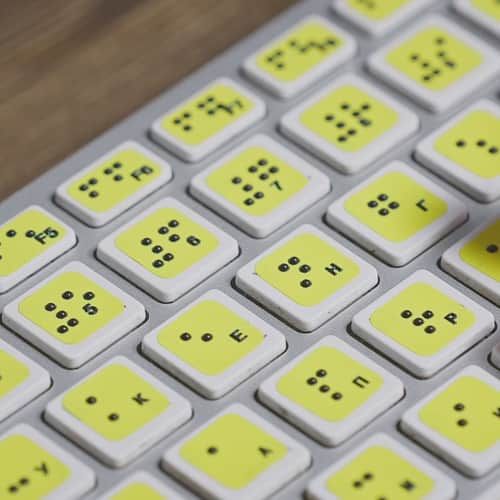
Vision problems can make it difficult to complete even the simplest routine task. But there are a number of innovative products that help overcome these difficulties without much of a hindrance. For example, seniors who have some form of partial visual impairment can download and install screen reader apps. Android TalkBack and Apple VoiceOver are two of the most popular screen readers used by many seniors. The screen reader uses automated voice responses to describe all the actions you perform on the screen. If you open a particular app or swipe to switch apps, the screen reader will read these actions out loud to assist you. There are also a number of voice-activated functions that can be preinstalled for basic phone use. Seniors who have undergone eye surgery and should avoid direct screen time can use these innovative talk interfaces for calling, responding to texts, and even using apps.
Assistive devices are not just limited to walkers and support bars. Apart from prominent installations to improve home safety, you can also consider installing a few comfort devices to improve accessibility. For example, sound-enhancing amplifier devices can bump up the volume on phones, TVs, and even audio systems for seniors who are partially hearing impaired. Super seniors who suffer from a lack of muscle control and tremors will also benefit from adaptive devices like buttoning hooks for dressing themselves. Even something as simple as a modified keyboard with a giant keypad can help visually challenged seniors use the device seamlessly.
As a senior, you may benefit from using assistive devices designed to cater to your needs and make your life more comfortable. It is highly recommended that you consult a healthcare professional to ensure that you utilize these devices properly and maximize their potential benefits. In addition, there are numerous online resources that can connect you to NGOs and Federal Air programs that offer many of the assistive devices mentioned above for free. Take advantage of these resources to improve your quality of life and increase your independence.

The Editorial Team at Modern60 is a group of highly skilled professionals with diverse backgrounds in journalism, content creation, editing, and digital media. They bring a wealth of experience and expertise to ensure that every piece of content meets our strict editorial guidelines and quality standards. The team is dedicated to delivering accurate, well-researched, and engaging content across various subjects, including health, wellness, lifestyle, and current events. With their commitment to upholding the highest standards of journalism and content creation, the Modern60 Editorial Team is the driving force behind our mission to empower and inspire our readers.
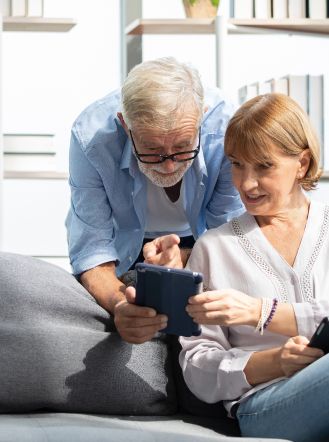
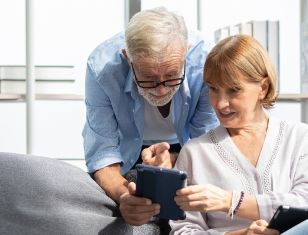
Unlock expert insights and tips with our exclusive ebook. Enter your email to get your free copy.
Please check your email for a welcome message from Modern60. If it's not in your inbox, kindly check your spam or junk folder
Your point of view caught my eye and was very interesting. Thanks. I have a question for you.